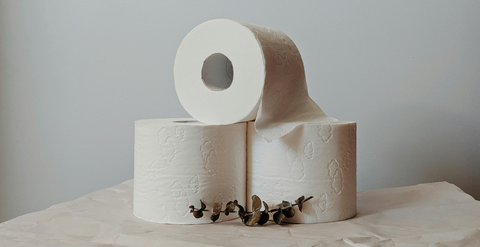Did you know that your bowel movements can be impacted by how much water you drink a day, your exercise and eating habits, age, gender and health status? While there is no set number of bowel movements a person should have, optimal digestive function would see you going “number two” two to three times a day!
With the incidence of bowel cancer in Australia and New Zealand being some of the highest in the world, it’s clear that we need to normalise the conversation around poop. However you want to call it: Poo, “the goods”, sh*t, bowel motions, stools, poopoo, number twos, excrement, kakkaa, faeces, or prefer phrases like “dropping the kids off at the swimming pool”, “some business to do”, “drop a deuce” or “bury the landmines”, everybody poops.
Not only that, but the size, shape and colour of your bowel motions also have a lot to say about your overall health too. Many people have no idea what their poop is telling them. But if you want to find out what your #2s say about you, keep reading!
The Bristol Stool Chart
Ever heard of the Bristol Stool Chart? It is a simple yet powerful tool used to assess digestive health based on the appearance and texture of your poop. Developed by researchers at the University of Bristol, it categorizes stool into seven types - from hard, pellet-like lumps (Type 1) to entirely liquid (Type 7) - each providing clues about gut transit time and overall digestive function. Ideally, healthy stool falls within the middle Types 3 or 4: smooth, sausage-shaped, and easy to pass. Variations outside this range may signal issues such as constipation, dehydration, or inflammation, making the chart a useful at-home guide to understanding what your gut is trying to tell you.

Time to let your poop do the talking!
Learn to interpret the health signals your poop is communicating with our handy interpretation guide.
What’s your poop’s appearance?
Type 1 – These stools are separate, hard balls or lumps. They are hard to pass and spend too much time in the colon. This indicates severe constipation. Severe constipation can be caused by not drinking enough water (dehydration), lack of fibre in the diet, not getting enough exercise, some medications and changes to your regular routine.
Type 2 – Lumpy and sausage like, these can be stuck together. These stools indicate mild constipation and may produce haemorrhoids if you strain to pass them out.
Type 3 – Like a sausage shape with cracks on the surface. These stools may cause mild straining but are on the low end of ‘acceptable’. It might be a good idea to increase your water and fibre intake.
Type 4 – Banana or sausage like, these stools can be ‘S’ shaped: soft and moist, not too hard, not too soft – they are just right! If you see stools like this in the toilet, GOLD STAR! You are an A+ pooper. You probably also eat a good amount of fibre, get regular exercise and drink at least 30ml of water per kg of weight to stay well hydrated.
Type 5 – Soft blobs with clear-cut edges, these stools can pass easily and are on the high end of ‘acceptable’. They are typical of one who experiences several bathroom trips per day and may indicate a lack of fibre in the diet. Our hormones can impact our stools, too – especially if you’re a woman and it’s around ‘that time of the month’.
Type 6 – Mushy consistency with ragged edges. This is usually indicative of mild diarrhoea. You might want to consider adding more fibre to your diet. If it is ongoing, getting a test from your GP or Naturopath to rule out any gut bugs is a good idea.
Type 7 – Liquid consistency with no solid pieces indicates severe diarrhoea. This is not good. Chronic diarrhoea can lead to dehydration, which is particularly dangerous. If you have signs of serious dehydration, seek medical help.
When to investigate things further...
Changes in bowel habits that persist for more than a few days - especially if they're unexplained - are worth paying attention to. While occasional shifts in stool shape or frequency can be due to diet, stress, or hormones, consistent patterns of constipation, diarrhoea, unusually pale or black stools, visible blood, mucus, or sudden weight loss may signal something more serious. These can be early indicators of deeper issues that warrant further investigation. If your gut instinct tells you something isn’t right - trust it. Always seek advice from a qualified health practitioner to rule out underlying issues and get the support your body may need.




